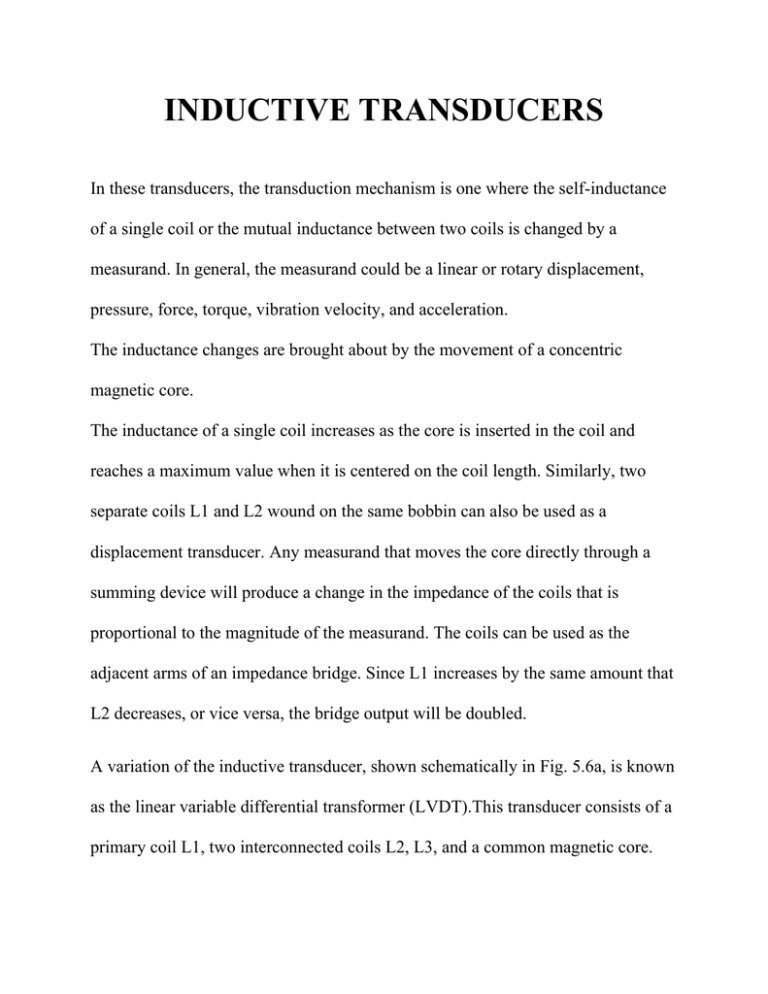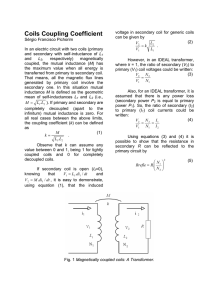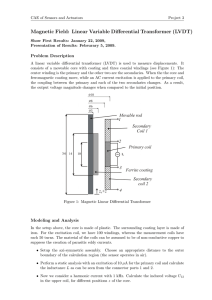INDUCTIVE TRANSDUCERS
advertisement

INDUCTIVE TRANSDUCERS In these transducers, the transduction mechanism is one where the self-inductance of a single coil or the mutual inductance between two coils is changed by a measurand. In general, the measurand could be a linear or rotary displacement, pressure, force, torque, vibration velocity, and acceleration. The inductance changes are brought about by the movement of a concentric magnetic core. The inductance of a single coil increases as the core is inserted in the coil and reaches a maximum value when it is centered on the coil length. Similarly, two separate coils L1 and L2 wound on the same bobbin can also be used as a displacement transducer. Any measurand that moves the core directly through a summing device will produce a change in the impedance of the coils that is proportional to the magnitude of the measurand. The coils can be used as the adjacent arms of an impedance bridge. Since L1 increases by the same amount that L2 decreases, or vice versa, the bridge output will be doubled. A variation of the inductive transducer, shown schematically in Fig. 5.6a, is known as the linear variable differential transformer (LVDT).This transducer consists of a primary coil L1, two interconnected coils L2, L3, and a common magnetic core. The coils are wound on a hollow nonmagnetic glass-filled nylon tube and the core slides coaxially inside the tube. The excitation frequency for coil L1 ranges from 1 to 10 kHz. Coils L2 and L3 are wound in phase opposition in a way that the voltages induced in them by coil L1 are 180° out of phase. Fig 5.6 Inductive transducers. (a) Linear variable differential transformer (LVDT) (b) LVDT accelerometer. Consequently, the voltage at terminals c-d is zero when the core is centered inside the tube between coils L2 and L3. When the core is moved away from the null position, the voltage at terminals c-d changes in amplitude and phase (polarity). This change, when brought about by a measurand, is proportional to the magnitude of the measurand. LVDTs are available in linear stroke lengths of ±1 to ±300 mm and sensitivities of 1.7 to 250 mV/V/mm, depending on the stroke length. The same transduction mechanism is also used in a rotary variable differential transformer (RVDT) to measure angular displacements and torque. To achieve good linearity, the angle of rotation is limited to ±40°. The LVDT can be used with Bourdon tubes, bellows, and proving rings to measure force and pressure and the leaf springs provide the restoring force. This is an open-loop accelerometer Source: http://mediatoget.blogspot.in/2012/05/inductive-transducers.html



